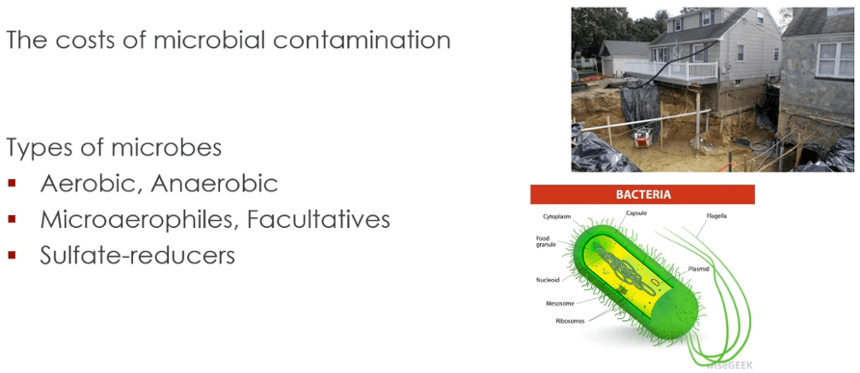Important Reasons Not to Ignore Sludge and Biomass in Farm Fuel Storage Tanks
Whether you're talking about a farm fuel tank or any other kind (even home heating oil), it’s safe to say that any time you find “sludge” or biomass,...
This article is a deep dive into one of the biggest misconceptions in fuel storage management and how to protect your systems
In the world of fuel storage management, there's a persistent belief that quick-turn fuel systems—those where fuel moves through tanks rapidly—are somehow immune to microbial contamination. This misconception has led many operations managers to neglect proper fuel maintenance protocols, potentially putting critical systems at risk.
In Episode 73 of the Fuel Pulse Show podcast, host Erik Bjornstad tackled this myth head-on, explaining why all fuel storage systems require vigilant monitoring and maintenance, regardless of how quickly the fuel moves through them.
Before diving into the misconception, it's important to understand what we mean by "quick turn" and "slow turn" fuel systems.
Slow-turn (low-turn) fuel systems are those where fuel sits in storage for multiple months or even years without frequent use. This is common in:
Quick-turn (high-turn) fuel systems are those where fuel moves into and out of storage tanks rapidly—within days or weeks rather than months. These are typical in:
Many fuel professionals assume quick-turn fuel doesn't sit in tanks long enough to develop microbial problems. After all, if the fuel is constantly being used and replaced, how could microbes have time to establish themselves?
"The chance of problems developing does not rest simply on the fact that the fuel gets used up and keeps getting changed quickly. It matters more that the tank does not change," explains Bjornstad.
This highlights the critical insight: microbial contamination isn't just about the fuel—it's also about the tank and the entire storage system.
Microbes in fuel systems establish themselves in two primary locations:
These biofilms are complex ecosystems that allow microbes to thrive regardless of how frequently the fuel itself changes. The microbes create a biological matrix that adheres to solid surfaces, protecting them from fuel turnover.
What's worse, the turbulence created when new fuel is delivered can exacerbate existing contamination. Each new fuel drop kicks up and distributes microbial colonies throughout the tank, potentially accelerating the spread of contamination.
"Microbial contamination doesn't need the same fuel sitting in there undisturbed for months," Bjornstad notes. "All it needs is water and opportunity, and they're going to get that both in a quick turn and a slow turn situation."
Failing to address microbial growth in any fuel system can lead to serious operational problems:
Clogged Fuel Filters: Microbial biomass can block fuel flow, potentially causing no-start and no-run situations in critical systems.
Tank Corrosion: Many microbes produce acids as byproducts of their metabolism, which can eat away at metal components over time. Additionally, the biomass layers themselves can create conditions that accelerate corrosion.
While these issues don't develop overnight, they can eventually compromise system integrity if left unchecked—something no critical operation can afford to risk.
Whether you manage quick turn or slow turn fuel, these three steps are essential for preventing microbial problems:
Don't wait for a shutdown to tell you something's wrong. Sample your stored fuel twice yearly at minimum, using a proper fuel sampler (often called a "bacon bomb") that can draw samples from near the bottom of the tank—typically 3-6 inches from the bottom.
Look for abnormal appearance, color changes, excessive water, or visible sediment. Remember that what you see in your sample is likely just a fraction of what's actually in your tank.
Even clear, bright fuel can harbor microbial contamination. The best testing method is TP by filtration, which directly measures microbial presence quickly and accurately.
This testing gives you a clear picture of whether you have problematic levels of microbes in your system and helps you determine if action is needed.
If you detect water or confirm microbial contamination:
"The reality is that simply removing the water out of a system will not eliminate microbial contamination if microbial contamination is established in your tank," Bjornstad emphasizes. "That is a myth that has been held over from multiple decades in the past, and with today's fuels, that simply is not true."
After treatment, follow up with another round of microbial testing to verify that microbial levels have been reduced from problematic to negligible.
The belief that quick-turn fuel systems are immune to microbial contamination is not just incorrect—it's potentially damaging to critical infrastructure. Regardless of how quickly fuel moves through your system, microbial contamination can establish itself on tank surfaces and cause significant problems if left unaddressed.
By implementing regular sampling, testing, and appropriate treatment protocols, you can protect your fuel system from microbial contamination and ensure it remains reliable when you need it most.
Remember: in fuel system management, prevention is always more cost-effective than remediation. Don't wait for a problem to manifest before taking action.
For more insights on fuel management best practices, subscribe to the Fuel Pulse Show podcast with host Erik Bjornstad on your platform of choice.
Whether you're talking about a farm fuel tank or any other kind (even home heating oil), it’s safe to say that any time you find “sludge” or biomass,...
Microbes in fuel are a fact of life for people who store fuel for any amount of time. Today's ULSD fuels are more prone to contamination than fuels...

This summer we hosted a webinar called Condition Monitoring for Stored Fuels. During the webinar we explained what condition monitoring is and the...